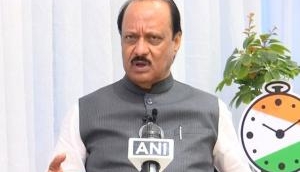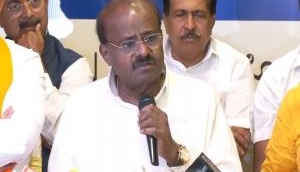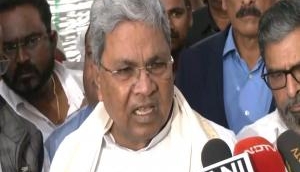
BJP Rajya Sabha MP Subramanian Swamy led his party's charge against the Congress and the Gandhis in particular, attacking them for their alleged involvement in the VVIP chopper kickback scam.
Swamy seemed to be prepared with all the facts and figures required to unleash a plethora of allegations against the Congress - that is being cornered by the ruling party for allegedly having taken a bribe to buy 12 choppers meant for high offices like the Prime Minister and the President from Italian company AgustaWestland.
Swamy extensively quoted from the Italian Court judgement and the Comptroller and Auditor General report on the AgustaWestland deal. Here are the key findings of the CAG report as published by PRS Legislative.
1. The initial Request for Proposal (RFP) issued by the Ministry of Defence in 2002 mandated an altitude requirement of 6000 metres. Only one helicopter, the EC 225 of Eurocopter, met this requirement. The EH-101 helicopter (later renamed AW-101) of AgustaWestland did not meet this requirement.
2. However, the first RFP was cancelled due to the emergence of a single vendor situation. In the revised RFP in 2006, the altitude requirement was reduced to 4500 metres, and a cabin height requirement of 1.8 metres was introduced, making the AW-101 eligible, and the EC 225 ineligible.
3. The CAG report points out that the lowering of the altitude requirement was against the operational requirement of the procured helicopters, especially in many areas of the north and north east of India. In addition, the single vendor situation remained even after lowering the altitude requirement, because of which the AW-101 of AgustaWestland was selected.
4. The Field Evaluation Trial (FET) of the AW-101 was conducted on representative helicopters and not the actual helicopter. The AW-101 was still at the development stage at the time of the FET.
5. Although the 2006 RFP had laid down the necessity of carrying out the field evaluations in India, they were conducted abroad.
6. Given the low utilisation levels of the existing fleet of helicopters, the Ministry was not justified in procuring four additional helicopters for VVIPs.
7. The IAF continued to face operational difficulties with existing helicopters as the acquisition of the new helicopters took more than 10 years.
8. The cost benchmarked by the Contract Negotiation Committee was much higher than the offered price, allowing no room for negotiation.
9. The DPP, 2006 makes an offset clause mandatory in all contracts above Rs 300 crore.Certain offsets were allowed which were not compliant with the provisions of the DPP.
The CAG report concludes that the process of acquisition from framing of quality requirements to the conclusion of the contract differed from established procurement procedures.
Source: PRS Legislative







![BJP's Kapil Mishra recreates Shankar Mahadevan’s ‘Breathless’ song to highlight Delhi pollution [WATCH] BJP's Kapil Mishra recreates Shankar Mahadevan’s ‘Breathless’ song to highlight Delhi pollution [WATCH]](https://images.catchnews.com/upload/2022/11/03/kapil-mishra_240884_300x172.png)

![Anupam Kher shares pictures of his toned body on 67th birthday [MUST SEE] Anupam Kher shares pictures of his toned body on 67th birthday [MUST SEE]](https://images.catchnews.com/upload/2022/03/07/Anupam_kher_231145_300x172.jpg)






